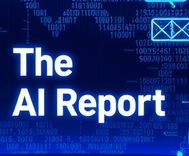AI security wars: can Google Cloud defend against tomorrow’s threats?

The AI Report
Daily AI, ML, LLM and agents news
The Unending Cybersecurity Battle: Are We Finally Gaining Ground?
For decades, cybersecurity has felt like a losing battle. Despite relentless innovation, defenders often find themselves outmaneuvered, sometimes not even realizing a breach has occurred until an external entity notifies them. In Asia Pacific, a startling 69% of organizations learned of their own breaches from outside sources. This persistent vulnerability, often stemming from foundational issues like configuration errors and compromised credentials, highlights a critical, long-standing challenge.
The arrival of artificial intelligence has intensified this struggle, creating what many call an "AI arms race." Both threat actors and security teams now wield powerful AI tools, transforming the landscape of digital defense. The question facing every organization today isn't if AI will impact their security posture, but how to strategically leverage it to shift the scales from constant defense to proactive advantage.
AI: A Double-Edged Sword in the Digital Arena
AI offers profound capabilities to both sides of the cybersecurity coin. For attackers, it means streamlined phishing campaigns, automated malware generation, and efficient network vulnerability scanning. This amplifies the volume and sophistication of threats, putting immense pressure on human security teams already stretched thin.
Conversely, for defenders, AI presents an unprecedented opportunity. It can analyze vast datasets in real time, detect subtle anomalies indicative of a breach, and automate responses at a speed humans simply cannot match. This dual-use nature of AI has created what Google Cloud terms the "Defender's Dilemma," a critical imbalance that intelligent AI deployment seeks to rectify.
Tilting the Scales with Generative AI
Google Cloud is actively demonstrating how AI can empower defenders. Their Project Zero’s "Big Sleep" initiative leverages large language models to scour open-source code for vulnerabilities. This program has moved beyond manual human analysis, identifying dozens of flaws that might otherwise go unnoticed, marking a significant leap toward semi-autonomous security operations.
The vision is clear: AI, like Google’s Gemini, will handle routine security tasks with precision, freeing human experts to focus on complex, high-stakes decisions. This transition from manual to assisted, and eventually to semi-autonomous, security promises to dramatically enhance detection and response capabilities, making organizations more resilient against evolving threats.
Navigating the Automation Frontier: Promise and Peril
While the allure of AI-driven automation is strong, it's not without its risks. Over-reliance on AI systems can introduce new vulnerabilities, creating potential for manipulation and sidelining invaluable human judgment. Experts advocate for a "human copilot" approach, where AI augments rather than replaces human expertise, ensuring that critical decisions remain within human oversight.
Furthermore, the unpredictable nature of AI, where systems might generate irrelevant or inappropriate responses, poses a significant liability, particularly for customer-facing applications. Uncontrolled AI output can damage brand reputation or create legal exposure. Mitigating these risks requires careful implementation and robust safeguards.
Practical Safeguards for AI Deployment
Addressing these challenges, technologies like Google’s Model Armor act as intelligent filter layers. These systems screen AI outputs for sensitive data, block off-brand content, and ensure responses remain within the appropriate business context. This control over AI’s conversational guardrails is crucial for maintaining trust and operational integrity.
Organizations also grapple with "shadow AI," where unauthorized AI tools proliferate across networks, creating unseen security gaps. Advanced sensitive data protection technologies are vital here, scanning across cloud providers and on-premises systems to identify and secure these unmanaged AI deployments. This proactive discovery is essential for a comprehensive security posture.
The Economic Imperative: Securing More with Less
A significant hurdle for security leaders, particularly in the Asia Pacific region, remains budget constraints. As cyber threats escalate in volume and complexity, many organizations lack the resources to scale their defensive capabilities. This paradox intensifies the pressure to do more with existing resources.
This is where AI’s efficiency gains become invaluable. By automating routine tasks, enhancing threat detection, and streamlining incident response, AI can help organizations optimize their security investments. It enables teams to manage a larger threat surface without proportional increases in headcount, offering a strategic answer to an urgent economic problem.
A Path Forward: Cautious Optimism and Strategic Implementation
While AI has yet to unleash entirely novel attack methods, it is undeniably amplifying the scale and speed of existing ones. This demands a pragmatic, comprehensive cybersecurity strategy that integrates AI thoughtfully. The goal isn't just to deploy the most advanced algorithms, but to implement them in a measured way, prioritizing human oversight and fundamental security hygiene.
The future of cybersecurity will be defined by how intelligently we harness AI, balancing its immense potential with prudent risk management. Victory in this evolving digital war will belong not to those with the most AI, but to those who adopt it strategically, incrementally, and with an unwavering commitment to human-centric security.

The AI Report
Author bio: Daily AI, ML, LLM and agents news
